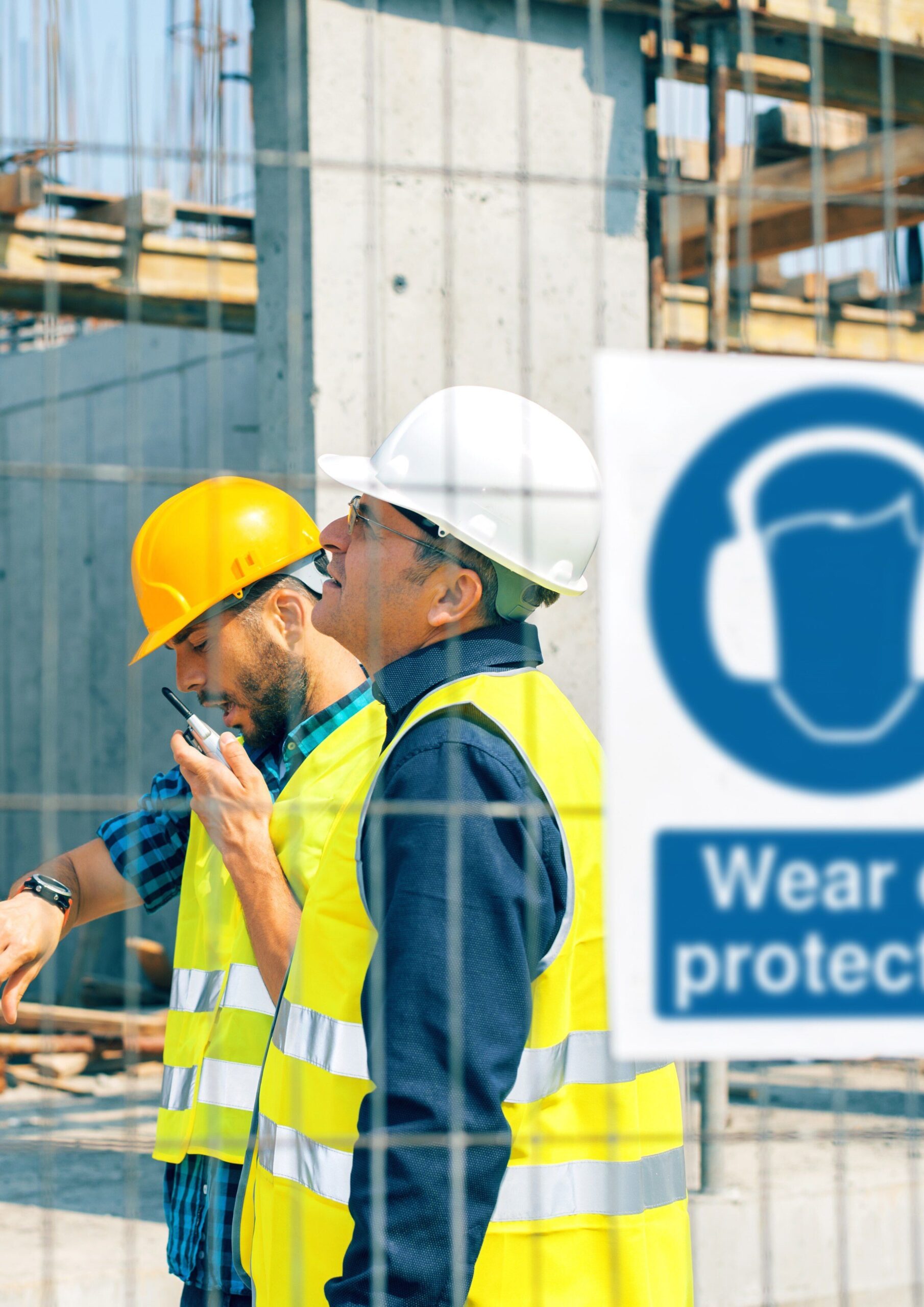With the pandemic not yet over, Ed Barnes, Product Innovation Manager at health and safety solution provider Seton, explores different approaches to conveying safety messages in the workplace this winter.
Since March 2020, Covid-19 has caused huge disruption for almost every industry, including warehousing and manufacturing. The challenges facing the sector over the past 20 months – including materials and labour shortages – are well-documented. However, the pandemic also created a number of operational challenges for production teams, who needed to implement new hygiene measures and social distancing rules. Reports suggested that meat processing plants, in particular, were susceptible to outbreaks of the virus.
Manufacturing and warehousing are among the riskier industries, with 85,000 staff in the sector reporting ill health due to work in 2020. To mitigate the risk, workers are used to seeing safety signage warning them of risks, hazardous substances, and communicating what protective clothing they should wear in certain areas. According to the Health and Safety Executive (HSE), 142 people were killed at work in 2020 – 2021 across all sectors, while 693,000 sustained a non-fatal injury in the previous year. A further 1.6 million suffered ill health.
Any reputable firm will do everything they can to keep workers safe – what they need to avoid though is bombarding employees with too much signage.
This is because it can lead to ‘sign blindness’ – an industry term which simply means we fail to notice what’s in front of us. Overexposure to Covid-related messaging over the last two years could mean people simply switch off when they see more safety signs, so how can you make sure they comply?
Sign blindness
Over the years, a standardised system of colours and symbols to keep people safe have become recognised across the globe. They’re so ingrained into our culture, it’s hard to believe that the green running man icon used to depict an emergency exit was only introduced in the 1980s.
These signs can be a powerful way to reinforce good behaviours – so why then do people sometimes break the rules? Of course, there are some cases where people make an active decision to override instructions from signage, which we’ll explore later. But after this, one of the most common reasons is ‘sign blindness’.
While the human mind has a remarkable ability to interpret abstract symbols, shapes and colours quickly, we can soon become desensitised to something, even though the hazard remains the same. Repeated exposure to even the most impactful signage over time can make it less effective. In other words, we become ‘blind’ to it, sometimes failing to register the hazard because we’ve not had an accident up to now.
This is exacerbated by another phenomenon known as ‘cluster blindness’, which occurs when there is too much information displayed in one place. Common signage such as ‘no entry’, ‘toxic waste’ or ‘safety workwear must be worn’ is used across UK workplaces. Yet the pandemic has created more visual cues, with people coming into contact with social distancing markers, face covering reminders and Test and Trace prompts numerous times, on a daily basis.
Even before the pandemic, overcoming sign blindness was a challenge for all health and safety specialists. With the increased overexposure to signage and overwhelming cognitive load, the need for new solutions has never been stronger.
Breaking up the load
To find what works, it’s important to understand how the human brain responds to information, and what makes messaging clear.
We all have a limited capacity for processing the visual cues in the physical environment. In a room, objects, people, elements of the built environment such as doors or windows and additional signage can all create a visually complex scene. When the brain is confronted with more information than it has the ability to process, it simply ignores it.
Feeling overloaded with information also causes a stress-response, which in turn can affect cognition and behaviour. To focus the attention, it’s important to declutter your signage. Remove any temporary signs that are no longer needed, and try to minimise any other visual distractions in the working environment. Using contrast can also help – systems such as illuminated signs or text in bold colours are effective, but only if used sparingly. A wall that’s jam-packed with bold, bright signs will only result in nothing standing out.
Beyond imagery, why not explore other senses, such as sound? Adding auditory alarms and sirens are an effective way to quickly alert people to a hazard – but just like visual signs, must only be used when absolutely required to avoid fatigue.
Modern signage technology goes one step further, incorporating verbal ‘talking signs’ to communicate critical messages at precisely the point when they’re needed. As well as ‘cutting through the noise’, this increases accessibility by reducing the need to read. It avoids sensory clutter and is simply impossible to ignore.
Cultural considerations
When compiling our recent report into sign blindness, we spoke to Professor Thorsten Chmura, director of the Centre for Behavioural Sciences at Nottingham Trent University to add context. He explained the importance of addressing some of the company’s core values and culture in order to truly facilitate compliance.
In an interview, he told us that, “People want to know that their opinion is valued, and that they understand the identity of the company they are working for. If your organisation fails to recognise these elements and instil trust, it’s likely that attitudes and behaviour towards it will be negatively affected and the entire system breaks apart.”
He explored other factors, such as individual motivations. A colleague striving for a promotion, for example, might take a personal risk in order to increase performance. Or, depending on their personality, they could be more likely to follow the rules in order to build a good reputation amongst the senior team.
Clearly, there is much more to consider beyond the physical signage elements in order to reduce the risk of health hazards and work. But academia and science do seem to agree on one common factor, as Thorsten told us:
“Various interventions and a mix of techniques are best. People can be difficult to predict. Some people learn better by listening, while others like to read a message or watch a video. Offering all methods of communication and learning will certainly help individuals to engage with their preferred method.”
If used sparingly, and in the right environment, traditional signage methods are certainly still effective in the modern workplace. But investing in a toolkit of ‘on demand’ systems that tap into other senses could help to eliminate the risk of sign blindness.
You can read the full free report Sign Blindness: A big risk to health and safety here.


